Hurricanes in the Turks and Caicos Islands
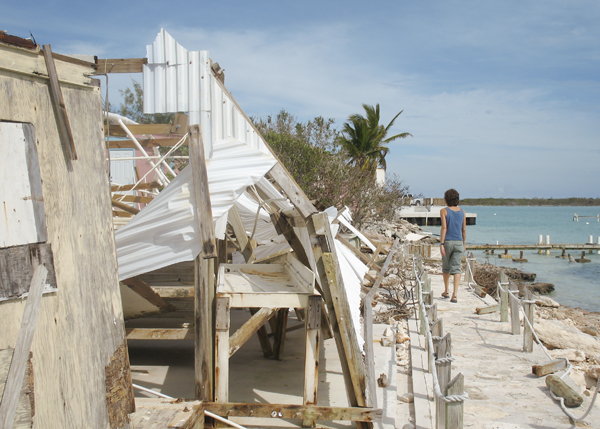 Damage to the Caicos Conch Farm in the aftermath of hurricane Hanna in 2008.
Damage to the Caicos Conch Farm in the aftermath of hurricane Hanna in 2008.
It happens so rarely that it’s almost not worth thinking about. But intelligent travellers are wise to remember that local weather can affect your vacation plans. Satellite tracking for weather prediction has made great strides but nothing/nobody is perfect. Mother Nature always seems to have a few tricks up her sleeve.
Hurricanes are rated from a Category 1 or minimal storm of sustained wind speed not less than 74 mph, to a catastrophic Category 5 with winds in excess of 156 mph. The power of a hurricane increases exponentially so the difference between one category and the next is quite impressive.
In 2014 there were just eight named storms in the Atlantic, of which two became major hurricanes. Areas of Providenciales received a record 21 inches of rain in August, 16" of that in 24 hours during Tropical Storm Cristobal.
We usually receive a minimum of four days warning that a storm may be headed our way, and often as much as two weeks, depending on its actual path and speed. If you haven’t left home yet, you can delay, and if you are here, you can get off the island before the storm hits.
If you do find yourself here during a tropical storm or hurricane, tune in to local radio and TV stations, which broadcast the details of a storm and government information about hurricane procedures and shelter locations.
Some other thoughts about visitors and storms:
1) If you are in a resort, or villa, the management will advise you. Many visitors opt to return home and the resort and villa managers will help you with evacuation arrangements.
2) Airlines: In the few cases in the past when TCI has been threatened by a storm, some airlines have sent extra flights to evacuate those who chose to leave, but space is limited.
3) Airline cancellation policies vary. When you book a flight to the Caribbean between June 1st and November 30th, ask about their hurricane cancellation policy and purchase travel insurance.
4) Don’t get caught in the first place. In the TCI, September is the most likely time that a hurricane or tropical storm will threaten us. It also coincides with the time most likely for the tradewinds to fade and the mosquitoes to breed. Many resorts pick this time to close down altogether, and refurbish the properties.
5) August 15 through September 14 is the height of the hurricane season in the TCI.
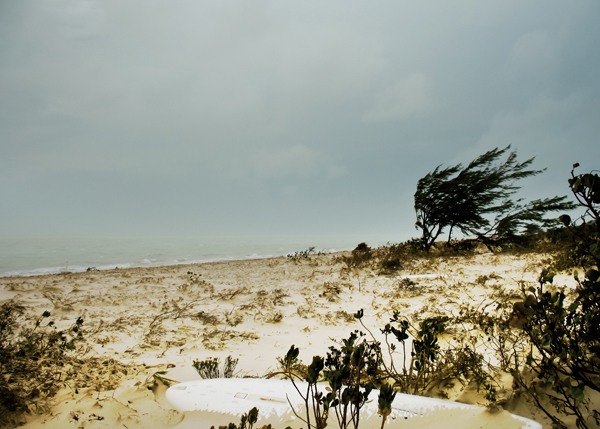 The windswept Long Bay Beach during hurricane Hanna in 2008.
The windswept Long Bay Beach during hurricane Hanna in 2008.
A major affect of a tropical storm or hurricane is airport closings, here or at the other end, or both. Airlines do not want their valuable assets sitting on runways in the middle of a hurricane. They tend to be very cautious and shut down operations well in advance of the arrival of predicted heavy winds and rain.
Another consequence, during a storm, is that ‘the lights go out’. There are many safety features built into the power grid. However, if a power outage does occur during a storm or hurricane, power lines are not energised again until the storm has passed and the line crew has completed inspections and repairs.
It does mean we live without refrigeration, lights and air conditioning for a day or two, or six, but most resorts on Providenciales have back up generators, as do the water company and the hospital.
We have hunkered down in our shuttered, ridge top home with friends and pets waiting out some pretty hairy and scary weather, including Erin (1995), Frances and Jeanne (2004), Hannah and Ike (2008), Irene (2011), Sandy (2013) and Category 5 hurricane Irma and Maria (2017).
However, during the 29 hurricane seasons we’ve experienced, the TCI has been missed by most storms that were headed our way. We have prepared countless times only to have, thankfully, a non-event.
A storm can grow and change course in a matter hours, with astounding and terrifying effect. Being aware and prepared should be a fact of life for anyone who chooses to live or vacation in a hurricane zone.
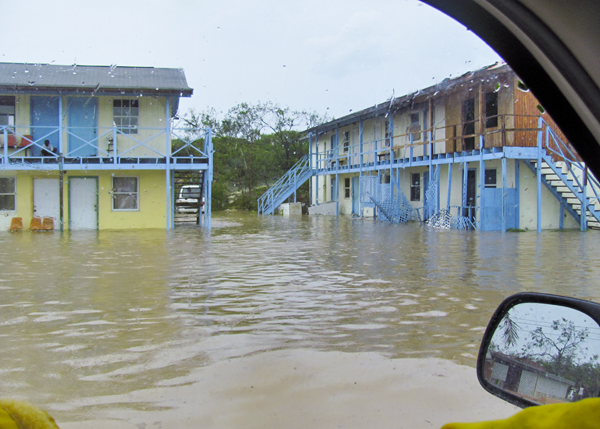 Flooding at the Caicos Lodge on Leeward Highway during hurricane Irene in 2011.
Flooding at the Caicos Lodge on Leeward Highway during hurricane Irene in 2011.
Hurricane Information and Tracking
Radio Turks & Caicos broadcasts on the following FM frequencies: Providenciales: 107.7; Grand Turk, Salt Cay and South Caicos: 101.9; Middle and North Caicos: 103.9. Privately owned WIVFM broadcasts on several stations including 92.5 and 102.5.
PTV8 Television airs The Weather Channel on channel 57 and local weather on 8. WIV Cable TV runs local weather on their channel 4.
Online www.nhc.noaa.gov is the official site of the National Hurricane Centre.
2022 Names
Alex, Bonnie, Colin, Danielle, Earl, Fiona, Gaston, Hermine, Ian, Julia, Karl, Lisa, Martin, Nicole, Owen, Paula, Richard, Shary, Tobias, Virginie, Walter. Followed by the Greek alphabet, if needed.
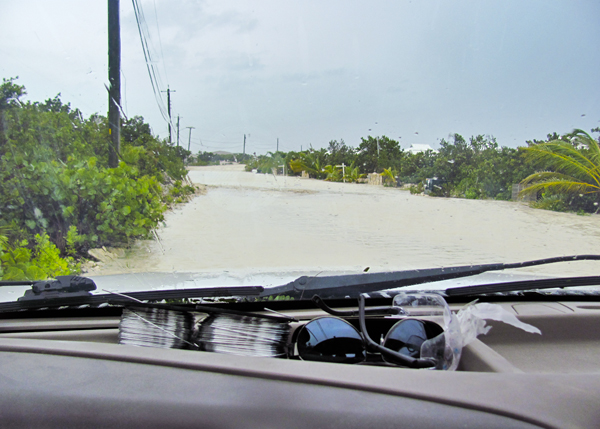 Flooded roads within Long Bay Hills during hurricane Irene in 2011.
Flooded roads within Long Bay Hills during hurricane Irene in 2011.
Storm History of the TCI
Note: National Hurricane Center began naming Atlantic storms in 1953.
1908: Sept 10: A storm with winds of 105 mph passed between Little Inagua, Bahamas and West Caicos/Providenciales, killing 19.
1926: Two storms, in July and September – one with 115 mph winds passed over West Caicos and a 150 mph storm also brushed the TCI.
1929: Probably the storm of Sept 24th - A hurricane with 155 mph winds crossed Ambergris Cay and then Providenciales.
1945: Sept 14th - a 120 mph storm “killed several”.
1960: Hurricane Donna – Sept 7th – 145 mph winds made one of the longest lived storms, it was powerful and did much damage to the Turks & Caicos.
1985: Hurricane Kate – Nov 18th – This late season storm caused fairly extensive damage to some areas of Providenciales and to local boats.
1995: Tropical Storm Erin formed over the TCI and on July 31st, spawning two tornados which crossed the center of Providenciales, from south shore to north, exiting over water at Turtle Cove. Winds of 128 knots were recorded over Turtle Cove before the instrument was destroyed.
2004: Hurricane Frances - Sept 1st – the eye of this major hurricane passed barely 20 miles north of North Caicos, damaging roofs and buildings and flooding on North, Middle and Providenciales. La Famille Express was grounded off Long Bay Beach, Providenciales.
2008: Hurricane Hanna – Sept 1st - the eye of this storm passed over Providenciales twice, causing major flooding on the south side of the island and surge on the north coast. A few days later… Ike.
2008: Hurricane Ike – Sept 7th - this major hurricane passed over Grand Turk, Salt Cay, South Caicos and Ambergris Cay as it headed west. More than 85% of the buildings on these islands, with the exception of Ambergris Cay, were damaged or destroyed.
2011: Hurricane Irene - August 23rd passed between TCI and Hispaniola as a hurricane, with no real effect on the islands.
2012: Hurricane Sandy - Oct 24th - caused flight cancellations with her 50 mph winds and torrential rains. The Mega One Triton was grounded off Governors Beach, Grand Turk. This storm went on to devastate the NE seaboard of the United States.
2013: Tropical depression which had been Tropical Storm Dorian crossed the TCI with minimal rainfall and winds on July 30th.
2014: Tropical Storm Bertha and Tropical Storm Cristobal impacted the TCI in August, dumping a record 21” of rain.
2015: Hurricane Joaquin - Early Oct - Heavy rains damaged roadways, docks and bulkheads.
2016: Hurricane Matthew - In early Oct TCI was spared damage with light rainfall and winds under 40 mph.
2017: Category 5 hurricane Irma - Sept 7th - Communications infrastructure was destroyed, extensive damage to roofs, the north side of the eye passed over the Islands for more than two hours with sustained winds in excess of 156 mph.
2017: Category 3 hurricane Maria - Sept 22nd - Passed by with winds of up to 125 mph and heavy rain.
Related Topics
Our Dolphins Swimming Free in the Turks and Caicos Islands
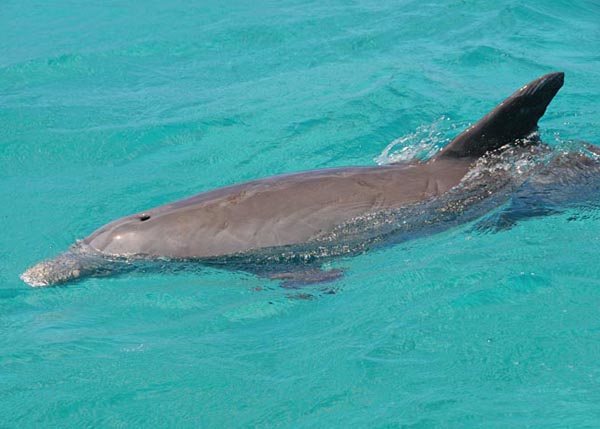 The Turks and Caicos Islands National Treasure JoJo has distinctive scars from running into boat propellers.
The Turks and Caicos Islands National Treasure JoJo has distinctive scars from running into boat propellers.
Since the early 1980s JoJo the Bottlenose Dolphin has patrolled the pristine waters of Grace Bay. He has also visited Grand Turk on occasion. He has entranced tens of thousands of visitors who have watched him, in awe, from the decks of charter sailboats and motor vessels and dive boats. Swimmers in Grace Bay have soft encounters with this gregarious marine mammal on a daily basis. He is wild, he is free and he chooses to spend time with the ungainly humans who invade his territory. JoJo is a National Treasure who represents the Turks & Caicos Islands to the world.
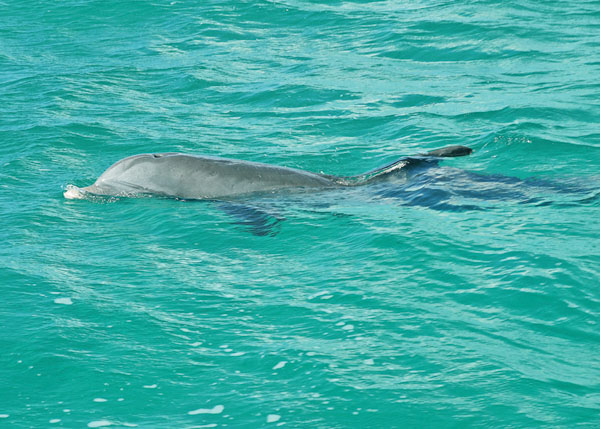 You may be fortunate to see the Turks and Caicos Islands National Treasure JoJo in Grace Bay.
You may be fortunate to see the Turks and Caicos Islands National Treasure JoJo in Grace Bay.
In early 1991 dedicated animal rights advocates in the TCI and their counterparts in the UK arranged for the last three dolphins held in captivity in the UK, Rocky, Missie and Silver, to be flown here and rehabilitated in the crystal clear waters off the Caicos Conch Farm. They were successfully released “into the blue” off West Caicos in the late fall of the same year.
The Turks and Caicos has the most extensive national parks system and protected land and sea areas in the Caribbean and the National Trust is doing a superb job, with few funds and little manpower, to protect and preserve our Heritage Sites.
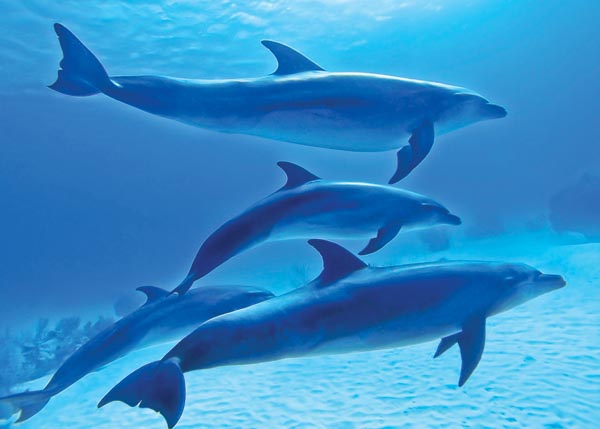 Wild bottle nose dolphins swimming free in the Turks and Caicos. Photo by Lawrence Wahba.
Wild bottle nose dolphins swimming free in the Turks and Caicos. Photo by Lawrence Wahba.
The actions and laws of the Turks and Caicos people and their Government proved that this country truly was Beautiful by Nature and deserved that motto, which we adopted so many years ago.
Sadly that is no longer true. The government and a small, vocal sector of the country’s population have turned their backs on our reputation as careful, caring stewards of the environment, in exchange for a handful of jobs at a dolphinarium for cruise ship guests to visit on Grand Turk.
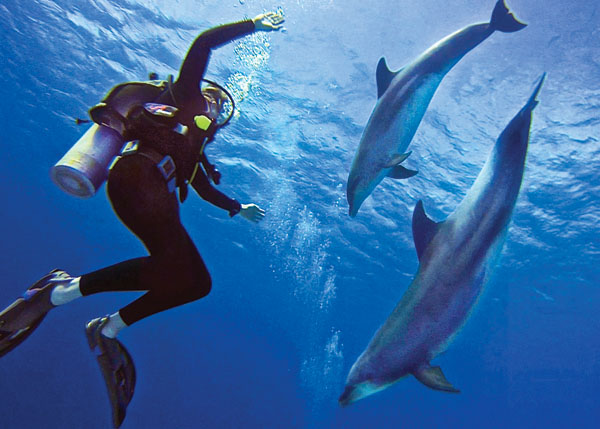 Diver with wild bottle nose dolphins swimming free in the Turks and Caicos. Photo by Lawrence Wahba.
Diver with wild bottle nose dolphins swimming free in the Turks and Caicos. Photo by Lawrence Wahba.
If you feel, as we do, that punishing these innocent, intelligent creatures by penning them up, doping them up and forcing them to perform for food is not what you want or expect to see in the Turks and Caicos, please let your views be known to our Tourist Board and to our Government.
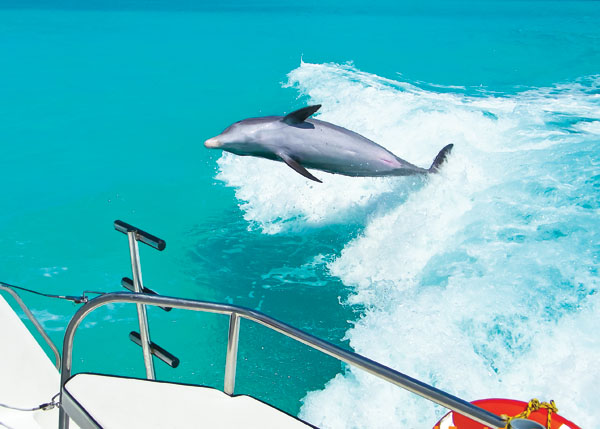 Photo by Kenard Cruises of Jojo jumping in the wake of "Dream Aweigh".
Photo by Kenard Cruises of Jojo jumping in the wake of "Dream Aweigh".
If you are unsure, or have no opinion about captive dolphins, we urge you to do a little research about this issue. Below you will find references and websites to many scholarly works and research papers on captive marine mammals.
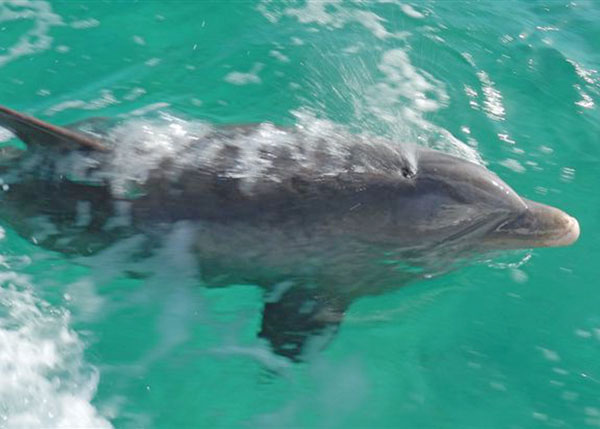 Jojo swimming alongside the boat. Photo by Caicos Adventures.
Jojo swimming alongside the boat. Photo by Caicos Adventures.
Turks & Caicos Organizations working to oppose Dolphinariums
TCSPCA: http://tcspca.com - Donate to the Dolphin Defense by purchasing a DVD of the Rocky, Missy, Silver story “Into the Blue”.
TC Reef http://tcreef.org/dolphindefensefund.html
TCI Dolphin Defense Fund Has the most up-to-date information on the TCI situation
https://www.facebook.com/groups/309221215868053/
Organizations working to oppose Dolphinariums
Ric O'Barry's Dolphin Project
https://dolphinproject.org
www.facebook.com/ricobarrysdolphinproject
reEarth
In The Bahamas Re Earth group just won their court battle to prevent the building of a fourth captive dolphin facility there.
https://www.facebook.com/groups/reeaerth/
WSPA
Dr. Lori Marino is a neuroscientist at Emory University.
See her research at www.discovery.com and search for ‘captive dolphins’ on this site
www.savejapandolphins.org
www.worldanimalprotection.us.org
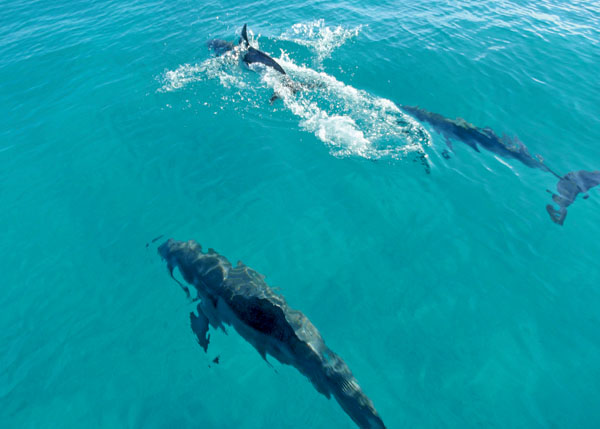 Wild dolphins swimming alongside the boat. Photo by Caicos Adventures.
Wild dolphins swimming alongside the boat. Photo by Caicos Adventures.
Suggested Movies and Documentaries
The Cove
Blackfish
Suggested Reading
The Dolphin in the Mirror by Diana Reiss
The Dolphins of Shark Bay by Pamela Turner
Related Topics
- SCUBA Diving in the Turks and Caicos Islands
- Turks & Caicos SCUBA Diving Operators and Instructors
- Snorkelling and SNUBA in the Turks and Caicos Islands
- Things To Do in Turks & Caicos - Listings of all island activities!
- Turks and Caicos Weather Forecast and Weather Charts
- Our Turks & Caicos Islands: Visit Grand Turk
West Caicos Turks and Caicos Islands
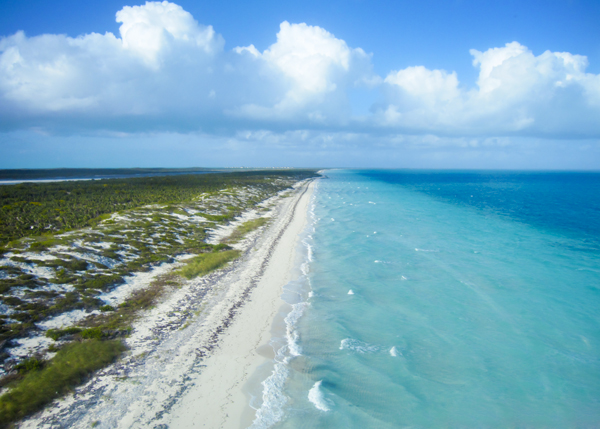 The beautiful, deserted eastern coastline of West Caicos.
The beautiful, deserted eastern coastline of West Caicos.
This long uninhabited island was being developed in 2006/7/8 but the massive resort project failed in 2009. New owners and investors were redesigning the site, which encompasses much of the ten square mile island, in 2013. However that project has also been abandoned as of Spring 2015.
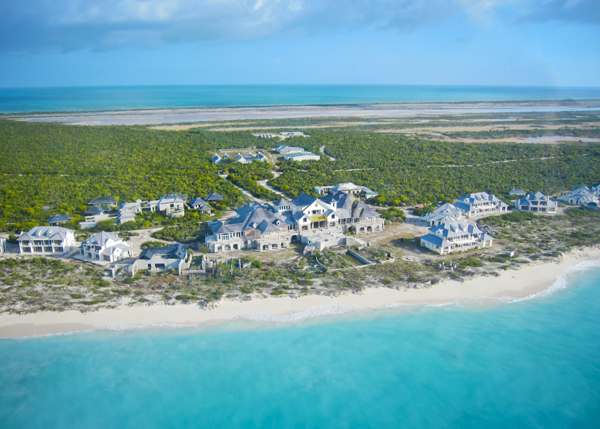 The West Caicos resort area is being redesigned.
The West Caicos resort area is being redesigned.
West is well known for the dive sites on the famous wall along its western shores and for the beaches on the north and east coasts. The Lake Catherine Nature Reserve protects the flamingos which nest in that lake, in the center of the island.
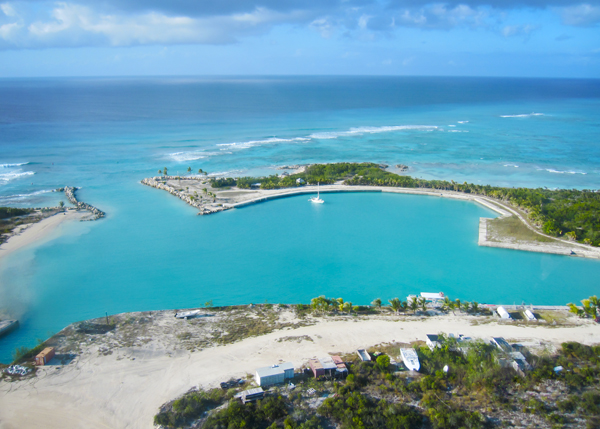 The protected marina at West Caicos.
The protected marina at West Caicos.
Related Topics
Our Islands an Introduction to the Turks and Caicos
Perhaps it is a bit of a reach to compare these islands to heaven. On the other hand, picture a set of green islands and cays, most of which are ringed by the softest, brightest white sand beaches, set in warm, clear blue waters ranging from palest turquoise to aquamarine to indigo. Then add some gentle rolling hills, swaying palmetto and palm trees, and powder puff clouds, to a destination where it is swimsuit weather all year long and we are getting close.
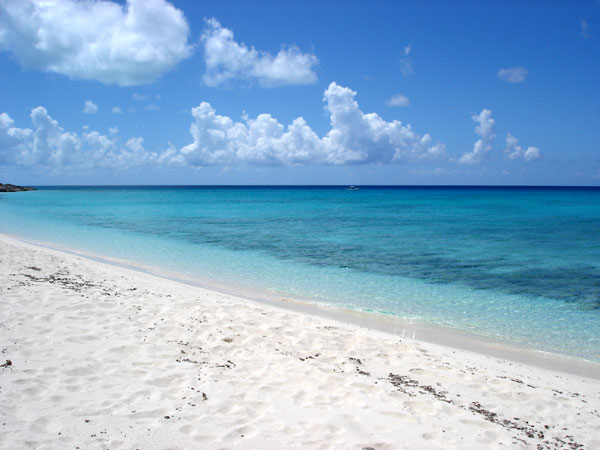 Beautiful Beaches & Crystal Clear Waters. Photo by Carl McBurnie.
Beautiful Beaches & Crystal Clear Waters. Photo by Carl McBurnie.
The Turks and Caicos, all 983 square miles (at low tide) offers you eight very individual, inhabited islands and a myriad of uninhabited islands, cays and rocks to explore. Most are easily reached by plane or boat.
The TCI offers world class diving on pristine reefs and walls, extraordinary deep sea fishing, sailing, daytime and sunset cruises, and every imaginable sport that occurs in or on the water. Really. That includes kiteboarding, windsurfing, kayaking, swimming and SUP in some very memorable waters.
On shore you will also be amply entertained. Whether you choose to ‘Do nothing, perfectly’ or explore every nook and cranny, there are so many choices. Our spas, fitness centers and restaurants are too many to count. Air-conditioned land tours, and taxi excursions will take you from one end of the island to the other, in comfort and style. Horseback riding, hiking and kite flying are all at your fingertips. Music and nightlife abound, including casinos and special shows. Just ask your concierge or villa management staff. They know our Islands and will advise you well.
Whether you are six or sixty, eco-tourist or hedonist, the Turks and Caicos is a perfect vacation destination. Come join us in the world’s number ONE beach destination, our Beautiful by Nature paradise.
Related Topics
Uninhabited Turks Cays in the Turks and Caicos Islands
The uninhabited Turks Cays can be reached only by boat from Grand Turk and Salt Cay. Trips can be arranged for picnics, snorkelling and deserted isle adventures. Please do not litter.
Big Sand Cay
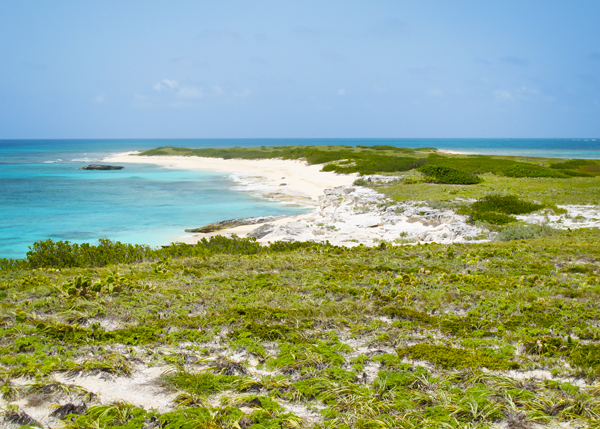 Looking north across Big Sand Cay, just 372 acres.
Looking north across Big Sand Cay, just 372 acres.
Big Sand Cay Sanctuary, is a remote island that lies 6 miles south of Salt Cay in the Turks Island group. It is the last landfall stretching southeast through the Bahamian chain and is a popular anchorage. The island is protected as a bird sanctuary and requires special permission to land on it. A spectacular beach runs down the western side and a high bluff, Beacon Hill, dominates the center. Treacherous rocks guard its northern approach but provide excellent snorkelling in calm weather. It is an amazing place to explore or have a picnic when out boating in the area and an advantageous spot to watch for migrating humpback whales in the winter months. There are exciting stories of pirate treasure buried here as well as numerous shipwrecks on the reefs nearby. HMS Endymion, a 44-gun British warship is probably the most famous of these, she ran aground on uncharted reefs 5 miles to the south of the cay in 1790. The mammoth anchors and chain can still be seen today. A trip to Big Sand Cay in mid-August one year revealed a group of mating nurse sharks and it is assumed, like other areas of the TCI, that this is an annual event.
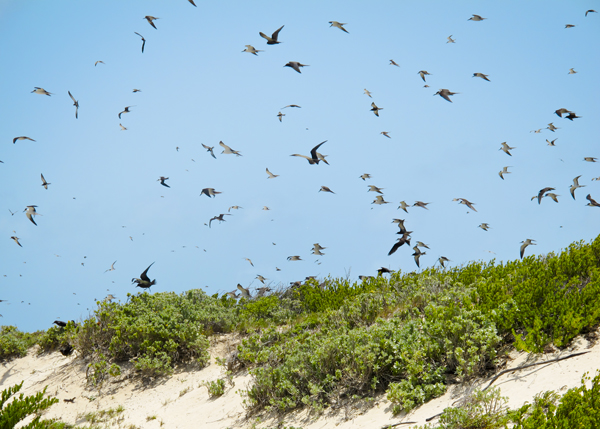 Big Sand Cay is a bird sanctuary and popular anchorage for sailing boats journeying to and from the Greater Antilles
Big Sand Cay is a bird sanctuary and popular anchorage for sailing boats journeying to and from the Greater Antilles
Gibbs Cay
Thought to be the location of a French gun emplacement during the 1780’s called Fort Castries. Now home to a huge population of seabirds, including sooty and noddy terns. An excellent picnic and snorkel destination. Shallow water “Stingray Encounters” are a popular half day boat trip approximately one mile from Grand Turk.
Long Cay
A sanctuary for the rock iguana. Sea-going terns stop at Long Cay to nest and raise their young, fearlessly employing dive-bombing skills to strike at predators or intruders.
Penniston Cay
Ruled by a rare colony of magnificent frigate birds. These birds never alight on land or water as their large wings and short legs make it hard to take off unless perched on a high rock.
Martin Alonzo Pinzon Cay
Hike to see a large colony of the native Turks Head cacti in the wild. Home to nesting gulls and terns.
